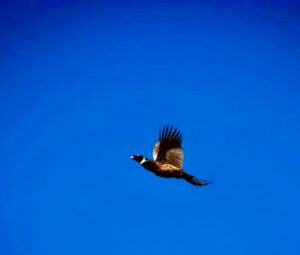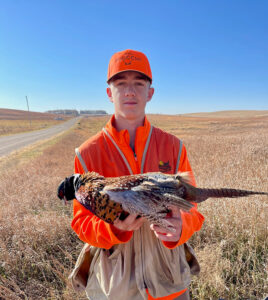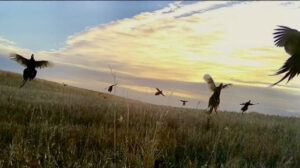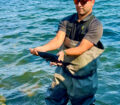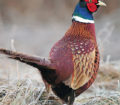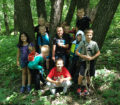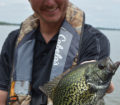By Steve Weisman
Outdoor Editor
Habitat and weather are the two factors often tied to the pheasant population numbers. Each year the Iowa DNR’s August Roadside Count data reflects those two variables. Since 1962, the Iowa DNR has conducted the August Roadside Survey, generating data from approximately 225/30-mile routes on Iowa’s upland game: ring-necked pheasants, bobwhite quail, gray partridge, cottontail rabbits, and white-tailed jackrabbits.
The most reliable and best counts are compiled on cool mornings when the sun is shining with heavy dew and no wind. Let’s take a look at what the roadside count data shows for 2024.
Statewide, results show Iowa’s pheasant population to be 19 birds per 30-mile route, which is down from the 23 birds per route a year ago. After a relatively mild winter with below average snowfall, the pheasant population seemed to be heading toward another bird increase in 2024. Unfortunately, that changed with the intense flooding that occurred during the nesting season. There is little doubt that the drop in overall numbers coincide with the heavy rainfall that occurred during late June.
Based on the results of the August roadside survey, Iowa hunters can still expect to harvest 350,000 to 400,000 roosters. Last year, Iowa saw an increase of an estimated 20,000 pheasant hunters over 2022, which helped push the harvest to nearly 600,000.
Todd Bogenschutz, upland wildlife research biologist with the Iowa Department of Natural Resources shared his thoughts on the successes of recent years. “Iowa hunters have enjoyed good pheasant hunting over most of the state for the past five seasons, including last year, when we had the highest harvest in 16 years. If our dry weather continues into fall, the corn and soybean harvest could be mostly complete by opening day, and that usually leads to good success.”
Bogenschutz still thinks the 2024 season will be a good one. “Last year, pheasant hunting was the best it’s been since 2007, and while the numbers from the survey were lower, it’s shaping up for another good fall,” he said.
Let’s take a look at each region. The NW region averaged 33 birds per route which was the highest density of any region in 2024, while the NE and NC regions averaged 25 and 24 birds/route respectively. All three regions should offer good to excellent pheasant hunting, particularly around public and private lands with good winter habitat.
The WC region reported the second highest counts in the state with 26 birds per route in 2024, with the C region reporting 22 birds/route. Counts in the EC region were statistically unchanged from 2023 but showed an upward trend. The EC region was one of the few regions that reported more hens with broods (50%) and chicks (18%) than in 2023, which led to upward trend in counts. All 3 regions should offer good to excellent hunting this fall where good quality pheasant habitat exists.
Counts in this region were highly variable with counts in the SE region showing a small upward trend, while counts in the SW region declined significantly compared to 2023 (Table 3 & Figure 5). Counts in all three regions remain below their 10-year means (Table 4). Hunters should expect bird numbers similar (SE region) or lower (SC and SW regions) compared to 2023.
A closer look at the NW region
Even with the disastrous flooding that occurred in the NW region, this region still was tops across the state with an average of 32.64 birds per count. The flooding did take its toll however, with the count down over 7 birds per route from 39.83 birds in 2023. However, compared to the other regions, the 32.64 average bird count was considerably higher than other regions. The reason comes down to the upland habitat that occurs in the NW region. So, although many of us were crushed by what could have been, the upcoming season still has the potential to be a good one. It just depends on where you hunt.
In visiting with Iowa DNR District 1 Law Enforcement Supervisor, Greg Harson, although it was a flood to remember, “We are probably where we were two to three years ago as far as bird numbers. So, we still have a good huntable population.”
As always, the upland habitat is key to success. Obviously, around the rivers and streams that flooding so severely, the bird numbers will definitely be down. Even other areas across northwest Iowa, lowland areas were also affected.
Harson notes, however, pheasants are a resilient bird. “There will be good numbers in areas where the habitat is good. I’d probably stay away from the river areas. We are seeing small birds, which means they did re-nest.” With crops maturing quickly and the season nearly a month away, most of the row crops will be harvested, which will push the birds into the grassy cover.
Gray partridge forecast
The gray partridge is thought of as a bonus bird for pheasant hunters. They are tough to bag, because they are often flushed accidentally, surprising hunters with their flush.
The 2024 statewide gray partridge count decreased significantly by 37% when compared to 2023. Typically, partridge numbers increase following mild winters and when spring/summer precipitation is well below normal. The wet spring no doubt impacted partridge reproduction.
Partridge are only found in the northern and central regions of Iowa, and counts showed downward trends in all northern regions as well as the central region. The WC and EC regions reported increases, but only the decline in the NC region was statistically significant, meaning there was no consistent trend in gains verses losses among routes within most regions.
This year’s statewide estimate is 26% below the 10-year mean and 56% below the long-term mean. Gray partridge prefer the wide-open and treeless agricultural lands of the northern two-thirds of the state. The NW, NC, and C regions reported the best densities in 2024. Better counts in 2024 came from Buchanan, Buena Vista, Calhoun, Pocahontas, Poweshiek, and Wright counties.
Quail forecast
Iowa’s statewide bobwhite quail index trended lower from last year with 0.5 quail per route in 2024 compared to 0.7 quail per route in 2023. However, the change was not statistically significant This is related to the variation in quail counts across the state this year, with higher counts in the WC and SE regions lower counts in the SC region, and no change in counts in the SW region.
This year’s statewide quail index is 49% below the 10-year average and 62% below the long-term mean. DNR staff reported coveys appeared very stressed in the SC region during the mid-January blizzard, but in other regions like the WC, the blizzard was less severe. Counts showed no statistically significant trend in any Southern region this year. Staff detected similar brood numbers in 2024. The SW region reported the best overall quail numbers in 2024, followed by the WC region. Better counts in 2024 came from Adams, Cass, Crawford, Guthrie, Mills, Page, Shelby and Wayne counties. Hunters should focus quail hunting where there is a good mix of shrubs, ag fields and weedy habitat.
(photos by Steve Weisman)
